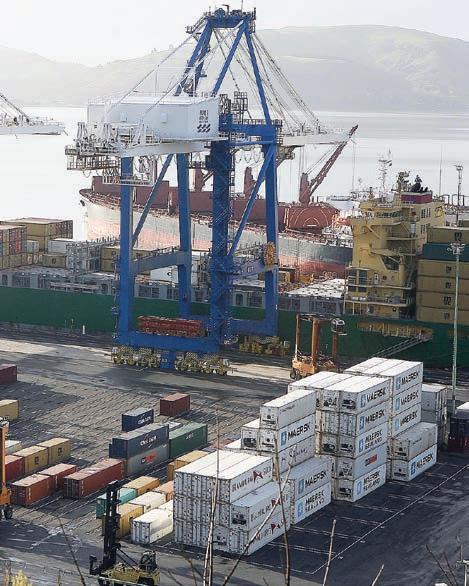
3 minute read
Milk Monitor
by AgriHQ
Promising season ahead
By Gerald Piddock
Each month the milk monitor delves into the dairy industry and gives us the low-down on the good, the bad, the ugly and everything in between.
Fonterra’s new season forecast will be out by now, with all indications pointing towards another strong season for dairy
prices.
That comes off the back of four pretty tepid GDT results during May, which all but solidified prices at their elevated current levels.
Whole milk powder (WMP) prices at US$4123 are now 54% higher than at the same auction a year ago and a third above their five-year average.
There have also been five auctions in a row where WMP prices have stayed above US$4000.
In addition, WMP prices are currently over a third above their five-year average, Westpac senior economist Nathan Penny said in the bank’s fortnightly dairy update.
ASB has the most bullish outlook, lifting its forecast by 70 cents to the second highest price on record at $8.20/ kg MS for the 2021-22 season.
It based this jump on WMP contracts continuing to stay above US$4000.
“The indications suggest that prices will hold their momentum well into next season, particularly during the crucial months when Fonterra does most of its shipping.
The upshot is we reckon WMP prices hold up higher for longer,” it said in its Commodities Weekly publication.
There are also indications that shipping issues will continue, meaning buyers will continue to scramble to secure supply.
Chinese consumer spending will continue to recover and despite downward pressure on prices near the end of the year, it is still confident demand will outstrip supply.
Westpac has put its forecast at $8/kg MS, but Penny rightfully doubts Fonterra will be that bold because of its tendency to reduce the risk of having to lower its forecast later in the season.
“On that basis, we expect the midpoint of Fonterra’s opening forecast to be between $7.00/kg and $7.60/kg,” Penny says.
Likewise, BNZ lifted its forecast from $7-$7.80/kg MS.
“The balance of risk is that our estimate is still too low,” it said in its Market Outlooks publication.
Rabobank is expecting it to land at $7.60/kg MS, as world markets continue to support strong dairy prices.
It bases this premise on improving global economic growth, foodservice channels are beginning to reopen and high feed-grain prices are ensuring producers’ margins remain tight, helping to keep milk production growth in check.
“In this price rally, Rabobank anticipates demand to remain in the driving seat, with the strength of new season’s forecasts dependent on Chinese import demand,” RaboResearch senior analyst Emma Higgins says.
“This would provide the third year of a milk price in the $7 range and a fifth year of profitability for most New Zealand dairy farmers.
“We do, however, suggest some level of caution for what lies ahead. We’ve seen recently how quickly dairy markets can turn in either direction, and we expect to see increased dairy commodity pricing volatility moving forward.”
On the supply side, the warmish May weather and abundance of feed – except for the drought conditions in parts of the eastern Central North Island and South Island – has meant many farmers have been able to dry off in early May.
This pushed milk volumes up 10% in March and Rabobank expects a 2% higher milk collection for the season.
Globally, growth is more mixed with strong milk production coming out of the United States, but European production is more mixed due to weather and feed availability.
There’s another reason to be cautious.
On-farm expenses shot up last season and it remains to be seen how much this has eroded the EBIT.
That lift will vary depending on the farm system, but anecdotally there have been reports that it is as high as 20%.
This is a result of several factors: wage increases and cost increases in repairs and maintenance as firms charge extra for having to import machinery parts because of covid-related shipping delays.
There has also been well-publicised increases in global fertiliser, although Rabobank expects prices to slowly ease as Northern Hemisphere demand eases.
There will also be ongoing labour shortages in the industry because of low unemployment and the Government’s tight rein on who it allows into the country to prevent further covid outbreaks.
This will inevitably reduce productivity as farmers are forced to work longer hours.
So it’s probably not the best idea to buy that new boat and Range Rover at the Fieldays just yet, but maybe get a few days off the farm before calving begins again. n
Ongoing shipping issues caused by covid means demand will continue to outrank supply for dairy going into the new season.









